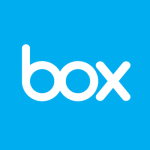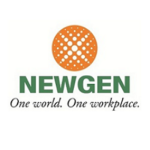Very easily, the most valuable feature of FileNet is its reliability. We've been using FileNet Image Services since 1989. I average under one hour of unscheduled downtime per year. I have 800 million documents of patient records and patient financial information that reside on my box. It is sub-second response time and it just plain works.
It has done a significant number of changes. One, it has gotten us off of paper and it has also allowed us to streamline some of our work processes, so that we are electronically controlling those as opposed to doing them in the paper-pushing world.
The key to me is the ability for Watson and other analytic opportunities to be able to reach into the dark, unstructured narratives that are a key component of our medical record and read them, ingest them, and apply their analytic skills to them.
We will not have that until we complete the migration onto the FileNet P8 platform. Then, even then, we expect that there are going to be some significant challenges. I'm confident that IBM, which has very smart people, is going to be able to figure it out. That's absolutely something that I’m looking forward to them adding onto the solution; 100%.
The stability is second to none. We have consistently, year after year after year, been able to maintain an uptime of, I don't know how many nines it goes down to, but you can do the math; I have under one hour of unscheduled downtime per year.
The scalability is phenomenal. It just keeps growing. I've often likened FileNet to a teenager at an all-you-can-eat buffet, where you can just keep on feeding it and it'll keep eating and eating and eating. You'll run out of food long before the teenager stops eating.
We do use technical support. I'm a member of what IBM calls the AVP, Accelerated Value Program. They're phenomenal. These guys know their stuff. They are responsive. I have a wonderful and long term relationship with Peter Fagan, who is my AVP tech. I absolutely love the guys.
The initial setup was 1989. That perhaps predates many of us. I joined the firm in 1995, so I was not there for the initial set up. I've been there for, I believe, a representative period of time.
I’m involved in the decision process to continue making upgrades, absolutely. In fact, it's a very small team of very dedicated and focused folks who have all been with the firm for approximately 20 years like me. We don't have turnover and we don't want turnover in our product line.
From time to time, we do explore options. We looked at EMC's Documentum product, for example. We found that the migration to it was going to be as painful if not more painful as the migration onto FileNet P8, and was going to have the added detrimental aspect of bringing in an entirely new relationship. We were not confident, honestly, that the product line was going to survive for the long term.
When I’m selecting a vendor to work with, I need one with vision that is going to be able to stay with the course over the period as long as a decade. Things do not move necessarily at the speed of light. We need to know that a product line that we spend a year or two or three migrating onto, is going to be consistently available and enhanced over the next decade.
I'm not convinced that migrations can ever be made easy. I think migrations are a pill; you swallow it, it works its way through your plumbing and it comes out the other end. There are various times in the process when it hurts.
As far as building a solution in-house, I'm not sure that an enterprise content management solution is the kind of thing that is buildable in-house, though there are some who are perhaps arrogant enough to think that they can pull that off.
The key is to get involved in the user community, whether that means coming out and dedicating a week at a place like World of Watson or whether it means reaching out to a local user board if one exists local to you. The customers and the other users of the product line are sometimes more honest than one would expect a Salesforce representative to be. Get as much information as you can from people who are actually using the product.
We are not employing IBM on cloud, hybrid, or box solutions in the immediate short run.
We absolutely have plans to include mobile. We are hoping to allow our clinicians access to importing of documents or importing of photographs that are taken during the course of patient care and including them in the historical medical record.
As far as new analytics or content management services that we're now able to provide for our organization, we are in the process of migrating off of the Legacy Image Services product onto the new P8 product line. Once that is complete, we hope to be able to take advantage of some of the content search services and other bigger analytics that might become available at that point. Until we're there, I can't speak to that.
We've been on Image Services so long that I have to say no, there aren’t any existing services that we're now able to provide better than we were previously. Image Services is at the tail end of its life expectancy and all of our focus now is on moving onto the newer platform called FileNet P8.
Regarding how FileNet has changed the experience for our customers internal and external, there's no question that it has enhanced our ability to manage access to the medical record and to make it available both to our researchers and to the clinicians at the same time. Back when it was paper, it would be signed out of the library just like a book. With only one copy of it, if it was being used by a researcher, and Mrs. McGillicutty came in unexpectedly for an appointment, we had to track down where that record was and sometimes it led to delays. Now that it's all electronic, that's no longer a factor.
As far its usability, I have been using FileNet exclusively in my work environment since 1990. I'm very comfortable in it. I have found that it is a reliable, fairly simple, but somewhat niche product. We are confident that the P8 platform, while it is more open, is going to be as reliable, is ultimately going to be as usable when we move forward, and perhaps much more modern and able to take advantage of a lot of the newer tools, such as mobile, that really have not existed.
The older product line is phenomenal, but limited in what it can do. The newer product line is not sufficiently well known to us yet, but over the course of the migration, we will certainly learn a lot more about it.













